The following Articles and Images have been added to the database
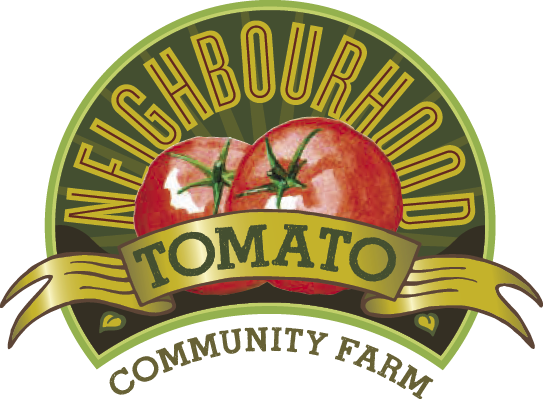
The Neighbourhood Tomato Community Farm (NTCF) is a relatively new initiative of Carebridge Community Support, and is in a sense an umbrella organization that will include the existing Neighbourhood Tomato Community Gardens. These organizations are community-based, are inclusive of all who want to be a part of them, and are intergenerational. The focus is on food security and includes individual allotment gardens as well as collective areas where gardeners work together to grow food for the Food Bank.
As part of their educational outreach, NTCF is offering a series of free Zoom workshops! Just email <jyoung@carebridge.ca> or call 324–3372 to register. Here’s the line-up:
On April 24 at 7pm, Allan Goddard will speak about a Foster Tree Program. As a follow-up, if Covid restrictions permits, there will be an opportunity to go out into the wild to find seedlings in need of fostering.
On May 1 at 7pm, Zoom in for the launch of the Great Veggie Grow-Off — an annual event that encourages everyone to “grow a row” for local food banks. There will also be a brief Q&A with Ed Lawrence!
On May 12 at 7pm, Scott Sigurdson of Indian Creek Orchard Garden will provide Organic Strategies for Home Gardeners.

Spring is the season of creation, and to celebrate, West Carleton Arts Society (WCAS) is launching its first online Spring Fling Art Show and Sale. It will take place from April 5–18 and can be viewed at <wcasonlineshows.ca>.
This year’s show will feature the works of 33 artists in a range of media. “This is always a fun show,” says organizer Judi Miller. “We have watercolour, oil and acrylic paintings, as well as photography, glass, textile and mixed media works. We will be presenting sixty pieces of art in the show.”
A three-member jury, independent of WCAS, reviewed all submissions and provided scoring results which determined entrance into the show.
For the past three years, Spring Fling has been held at the Kanata Civic Art Gallery. Due to Covid, the physical show was cancelled and the online show was organized.
Established in 1988, the West Carleton Arts Society is an active, non-profit volunteer organization of vibrant, talented visual artists and fine crafts people. Its dynamic program includes regular ARTiculate artists’ presentations, an annual Spring Into Art Conference, the fall Expressions of Art show and sale, and the $100 & Under Christmas sale. Member benefits also include opportunities to show work at several local venues and to engage with other regional artists. Find more details at <westcarletonartssociety.ca>.
As a follow-up to her Winterwords workshop, Susan Gillis is offering a four-session poetry workshop on Tuesdays from 3–4:30pm, beginning on April 27.
Susan writes: “From first thoughts to first lines, from early inklings to full poems: in this workshop, we consider as readers and writers what engages us in a poem and brings it to life. Each week we explore a published poem and discuss participants’ own work written in response to the week’s prompt.
“This workshop is for anyone interested in reading and writing poetry. All levels of experience are welcome; no specialized knowledge is required. Enrollment is limited to six participants and the cost is $125 per person. To register, or for more information, email <susan@susangillis.ca>.
“A little about me: I’m a poet with four books (Yellow Crane, The Rapids, Volta and Swimming Among the Ruins), several chapbooks (Obelisk, Twenty Views of the Lachine Rapids), a solid collection of award nominations and reviews, and a side gig as a collaborator with three other poets in the group Yoko’s Dogs (Whisk, Rhinoceros). I’ve worked with writers of all ages and all stages, bringing more than two decades of writing, editing, and mentoring experience to our work together. I talk with poets and write about poetry and the writing life at Concrete & River, and co-curated (with Mary di Michele) the online micro-poetry journal HALIBUT.”
Find more information at <susangillis.ca>.
ConnectWell Community Health is the new name for Lanark Renfrew Health & Community Services (LRHCS) and all its parts and programs offered through Lanark Community Programs, North Lanark Community Health Centre and Whitewater Bromley Community Health Centre.
With 240 staff and 200 volunteers providing services that range from autism services and mental health supports to primary health care and therapeutic riding, ConnectWell Community Health’s programs and services will remain the same across the large rural geography the organization serves, including Lanark and Renfrew Counties and the United Counties of Leeds and Grenville.
The name change occurred as LRHCS has become an increasingly integrated organization since five organizations voluntarily joined together under one Board of Directors, one organization and one senior leadership team almost twenty years ago. The move to one name and one website is designed to assist people in our communities to be better informed and aware of the services available to them from ConnectWell Community Health. The new website responds to people identifying their needs and guides them appropriately.
“Very few people know the full scope of the work we do together as one organization — serving a large rural geography in eastern Ontario — to improve the health and wellbeing of the people and communities we serve,” says CEO John Jordan. “Our new name, ConnectWell Community Health, pays tribute to our evolving integration where all our staff and volunteers are connected to each other under one name, with a shared vision, mission and set of values.”
Board of Directors Chair Deborah Duffy adds: “ConnectWell Community Health highlights the connections we make to one another, to our clients, to our partners, and to our communities. It also symbolizes that we help connect people to each other so they can improve their own health and well-being and that of their community.”
To learn more about ConnectWell Community Health, its programs, services and organization, visit the new website at <connectwell.ca>.
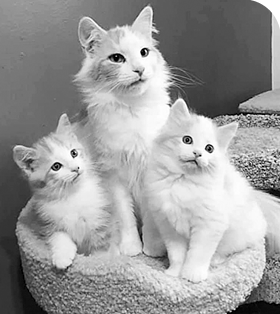
Dickie’s Cause 4 Paws is a non-profit, no-kill, volunteer-run organization in Carleton Place that is dedicated to rescuing and saving the lives of abandoned, lost or feral cats and kittens in Lanark County. In addition to their Trap, Neuter, Release or Re-home Program, they also provide spay/neuter for farmers who are overwhelmed with cats, and for low-income families.
As it is almost “kitten season”, they are planning an online auction to raise money towards vet care for the cats and kittens they rescue.
If you have some “like-new” items kicking around the house that you never use, or gifts that you have never opened and used, please consider donating them! Dickie’s will be accepting drop-offs at 81 Emily Street in Carleton Place, and they also have a Barrhaven location. Financial donations are welcome too!
The auction itself will run from 7am on April 14 to 7pm on April 26. For a list of suggested items, as well as any other information related to the auction, visit Dickie’s Cause 4 Paws on Facebook.
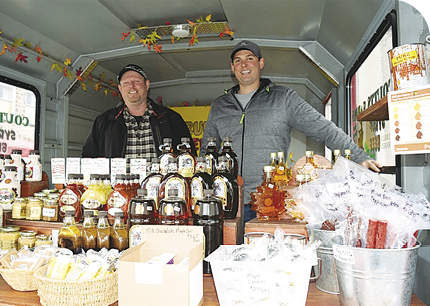
The 2021 Festival of the Maples will be a virtual experience, due to ongoing Covid-19 restrictions. People who would normally attend in person are encouraged to connect with the Festival of the Maples through the website <festivalofthemaples.com> and social media pages to enjoy an online artisan market, fun maple facts, and upcoming contests and games.
On the website, people can also find links to local maple producers, visit local producers’ locations (pending Covid-19 restrictions) or shop online for their favourite maple products.
There are also opportunities for individuals and local businesses to get involved by becoming a sponsor, or by joining the online artisan market. Details are on the Festival website.
Entertainers who might have performed in the past are encouraged to “donate a song” to the Festival of the Maples in lieu of the usual main stage. Please visit the website’s Virtual Stage for more details.
Organizers note that: “While we will all miss our usual vibrant festival, we are looking forward to making this year’s festival a fun, interactive experience and we look forward to returning to our in-person festival next year.”
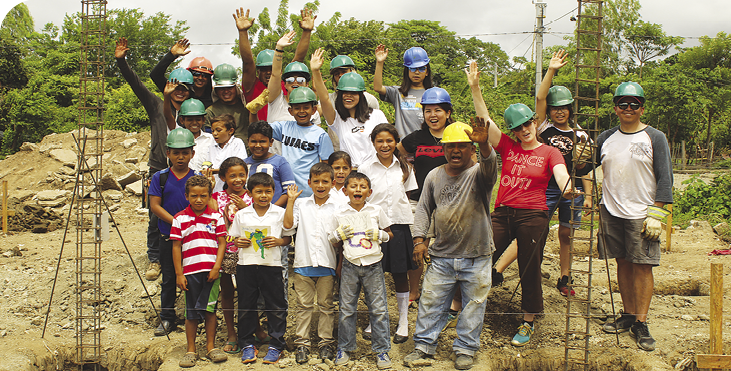
In conjunction with SchoolBOX, Dina Bell-Laroche is offering a series of “Grief Cafés” to support people who are suffering through losses. Dina is a certified Integral Master Coach and Grief Companion who is turning her own loss story into a force for good during these difficult times. The cafés take place via Zoom, and participants are welcome to make donations to SchoolBOX — all proceeds are being directed to raise Tracy’s Hope Classroom #3 in Nicaragua.
Dina writes: “My involvement with SchoolBOX has changed my life. When my sister Tracy died twenty years ago, a part of me died with her. Truth be told, I felt alone and isolated in mourning the death of my sister. Sadly, too many of us aren’t acknowledged when we are bereaved and so we find ways to grieve in silence.
“It was only when I was in Nicaragua with my soccer team to build a classroom that I found a piece of my heart among the children, the teachers and the beautiful community leaders. And as I began to heal, my desire to continue Tracy’s legacy through SchoolBOX came to life. Since that time, we have built two classrooms and two libraries. We are currently building her third classroom by hosting Grief Cafés, virtual gatherings to support people who are suffering through a loss. It makes my heart sing to know that I am supporting people in need, both domestically and abroad.
“SchoolBOX is my forever charity and I’m eternally grateful to this wonderful organization for making education possible for children in Nicaragua and for supporting healthy lunches in Waubauskang. Through this work, I have made peace with my grief.”
Upcoming Grief Cafés
Grief Cafés will be taking place from 7:30-9pm on the following dates: April 22 (Disenfranchised Grief), May 27 (Mother’s Day Grief), June 24 (Death of Dreams), September 30 (Back to School: Grief in Children & Youth), October 28 (Day of the Dead), November 11 (Generational Grief), and December 16 (Grief during the Holidays). Each one will have a capacity of 25 participants. Email Sarah Kerr at <sarah@schoolbox.ca> to register.
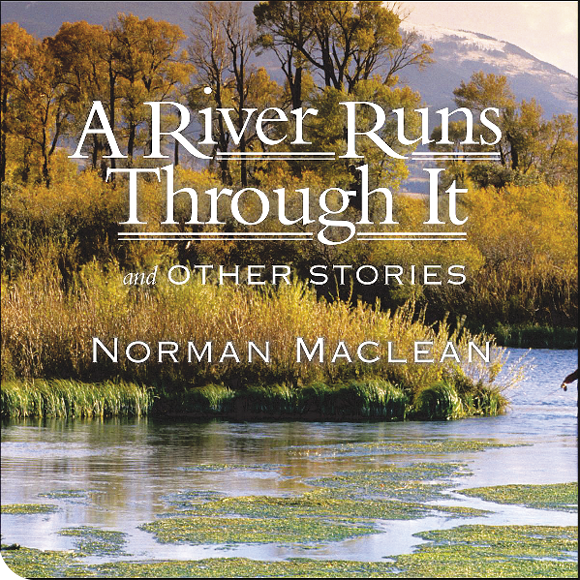
As unpleasant as restrictions and lockdowns may be, most of us have found some healthy ways to cope with them and keep our spirits up during this past year’s once-in-a-lifetime pandemic. Baking became a go-to for some folks, as did gardening, both in and outdoors. Cycling made a comeback too, and judging by social media posts, a whole lot of families adopted a whole lot of puppies. And if people weren’t knitting their new puppy a new sweater, it seemed they were piecing together puzzle after puzzle, and normally there was a bottle of wine or a locally-brewed craft beer on the table too. Then there were folks like me: bookworms, avid readers, bibliophiles — who all at once found ourselves at home, with a considerable amount of reading time on our hands, although that was not necessarily a bad thing.
No, in fact, it was sometimes pleasant — like a Snow Day used to be back when we were kids. And as small businesses adapted to lockdowns, a rather cool phenomenon began: you could call your favourite indie bookshop in the morning with a request or two, and have those requests delivered to your mailbox later that day. Like books were pizzas. It was weird. And it was glorious.
For many people, reading is therapeutic. It’s also thoroughly enjoyable and relaxing — a quiet, compelling and richly-imaginative diversion in a sometimes too-loud, too-chaotic world.
For others, reading can be a spiritual experience, a gratifying voyage, a balm for a bothered soul.
“To read is to take stories into ourselves,” says Saskatchewan-writer Harold R. Johnson, whose book Firewater: How Alcohol Is Killing My People (And Yours) was shortlisted for the Governor General’s Award for English-language non-fiction in 2016. “Stories are powerful,” Johnson says, “they shape the world, they shape the way we see things, the way we experience our journey here. To read is to be carried along a path, a road, a winding stair, a sailing ship, a space ship, a thought ship. A book is a journey, and like our life journey, the best part is the travelling, not the destination.”
My friend Hollay Ghadery, author of the forthcoming memoir Fuse, thinks along similar lines. “Reading has always been a preferred means of escape,” she says, “but this year, it’s the only one — besides being in nature — that truly feels like an escape. Holding a bound paper book in my hand loosens the digital tether that has become an even more permanent fixture of my life. Reading reminds me there are worlds beyond this one; there’s hope.”
Shelley MacBeth, owner of Blue Heron Books in Uxbridge, Ontario, a beautiful bookshop that has twice won The Libris Award (for Best Bookstore in Canada), knows the value of a good book.
“Personally,” she says, “reading as a ‘transporter’ is everything. It could be solace, escapism, intrigue, provocation but… the right book? Totally immersive.”
A deeply absorbing book can be mesmerizing. For me, a single sentence can be mesmerizing — and it can snag me, as they say, hook, line, and sinker. As this one did, written by Hilton Als, in the “Forward” to Joan Didion’s Let Me Tell You What I Mean: “A peculiar aspect of Joan Didion’s nonfiction is that a significant portion of it reads like fiction.” That’s when a voice in my head says, yes, yes, yes, now please tell me more. Why is that? And I settle into my chaise lounge chair, pull a soft throw snugly over my shoulders, and dig in. Often, I’ll have read a dozen pages before I think to look up again at my surroundings. Still raining. Cat’s curled up in her blanket near the window. Fan is whirring. Hmm. Then I’ll relocate my place on the page and read on: “‘I ransacked my closet for clothes in which I might appear invisible in class,” Didion remembers, “and came up with only a dirty raincoat. I sat in this raincoat and I listened to other people’s stories read aloud and I despaired of ever knowing what they knew.’”
I felt a recognition, then, in how Didion felt — dread, wanting to disappear; almost sick in the uncertainty that the stories she wanted to tell were the stories people wanted to hear. A chill fell over my shoulders. That was me in high school, I thought. That was me in university. That was me when I was writing my first novel.
In recognizing ourselves in others, through books, we become more connected. We feel less alone, less adrift perhaps, and sometimes less afraid. The less afraid part strikes me as significant during a catastrophic global pandemic. What a blessing it is to be made to feel less afraid, to be gathered safely in by the solace of shared experience. It is not itself like a vaccine that will render one immune to an oft-deadly virus, but it is a bridge of comfort. And for the time being, we can use all the comfort we can get.
Little wonder that, when I’m in need of inspiration, I spring to my feet, walk hurriedly to my kitchen bookshelf, pluck out my timeworn, dog-eared copy of Norman MacLean’s A River Runs Through It and Other Stories, flip to a well-marked page, and drink in these lines:
Eventually, all things merge into one, and a river runs through it. The river was cut by the world’s great flood and runs over rocks from the basement of time. On some of the rocks are timeless raindrops. Under the rocks are the words, and some of the words are theirs.
I am haunted by waters.
I read that passage three, maybe four times a year. Every time it leaves me breathless, in awe. And sometimes its beauty brings tears to my eyes. Always, the elegiac words that end MacLean’s novella ignite in me a firestorm of inspiration. And I am filled with gratitude to the author for leaving us such profound and soulful beauty.
I am haunted by books.

I spy with my little eye… It’s a bird… It’s a plane… It’s two actors on stage together?? Almost as elusive as Superman! The Station Theatre is so very excited to announce that at the end of April they will be presenting their next play, to an audience, via Zoom. Norm Foster’s Here on the Flight Path is a super-cute comedy about a fellow named John (played by Noel White), who just wants to live a nice, quiet life in his fourth-floor apartment. However, his life continues to be disrupted by the women who move into the apartment beside him. On their respective balconies, John meets Fay, and then Angel, and then Gwen (all played by Jen Hart). All women are very different, but all will teach John some interesting lessons and allow him to grow in ways he didn’t even know he needed to!
Putting this show on was really important to the group. It’s been a year since live theatre was, well, pretty much anywhere. Not only are the actors missing it, but we recognize how much our dedicated audiences miss it too. So, we thought about how on earth we could put a show on, safely, and share it with our community. The easiest answer was through Zoom. We had done two previous projects on the platform, and it seemed to work well. So we decided to put a play on and put it up on Zoom, but this time we wanted it to look like a “real” stage play.
The first step was to choose a play that has a small cast. Co-directors Mandi Reed and Katharine Coleman decided that Here on the Flight Path fit the bill because it features one man and three women, but the women can all be played by the same actress. And it was Norm Foster, which pretty much guarantees a sure hit, with witty banter and heartfelt emotions throughout. This play has plenty of both.
The second step was to find our cast. Hmm… The actors have to be on stage together and in close quarters, and maybe even touch. Do you take those aspects out of the script, or cast a couple? Luckily, we had one of those on hand. Jen Hart and Noel White (both of whom were last seen in our last live show in February 2020) accepted the challenge of doing this play on film — which they are finding to be quite a different process than normal stage acting!
Step three was to build the set. Fortunately for us, unfortunately for him, our resident set designer/builder extraordinaire Bill Hamilton had to cancel his normal plans of going to Texas for the winter, which was the theatre’s gain. Once again, a simple set of two balconies comes to life on our stage.
And so, with masks and distance in the theatre, rehearsals began and continue. The filming is being done by Kevin Reed, so we’ve been able to abide by the rules and limitations put upon us by the region and province. Trying new things can be difficult, but they can also be a welcome challenge to keep things interesting. We’ve even tried some little editing tricks to keep the presentation interesting for the audience. It’s a fun play with a lot of laughs, and let’s admit it, we could all use as many of those as we can get these days!
The show will be filmed and shown through Zoom on April 29, 30 and May 1 at 7:30pm; and on Sunday, May 2 at 2pm. Tickets will be available through Eventbrite starting in April, and donations to the theatre will be accepted. Registration and ticket information are available at <smithsfallstheatre.com> or through our newsletter, which you can join on the first page of our website.
Don’t forget, if you are a regular theatre patron and have 2020 Season vouchers, they are not to be used for this play. Those vouchers will be valid until you are able to use them in the theatre for in-person plays, so any expiry date on them can be ignored. We will honour them until they can be used — no worries there!
Storytelling Series for Children
The Station Theatre is working on creating a storytelling series of classic children’s stories. These are stories that we grew up with, but maybe your kids and grandkids haven’t had a chance to hear. We will be delivering the stories in different formats, but all will be up on YouTube and accessible to everyone. This offers a great little break for caregivers to let the kids fall into the spell of other worlds.
From Beatrix Potter stories to The Wonderful Wizard of Oz and The Wind in the Willows, we have over ten storytellers who will be recording these stories, which we will have up on the Storytelling page on our website. The page will be updated regularly with both short stories and longer ones — something for everyone!

Winter is now safely behind us and as the famous saying goes, “April showers bring May flowers”. Although the rains are rather unpleasant, we can be certain that they will bring an abundance of beauty to our community. This could be true of the pandemic we’re living in as well. Although the lockdowns are testing our patience as parents, this cloudy season may be giving us an opportunity to dig deep and rethink our idea of back to normal. A time to dream up “back to better”, as Kris Riendeau expressed it in theHumm’s Winterwords initiative. So that in the end of this Covid era, as poet Amanda Gorman expressed: “Let the globe, if nothing else, say this is true / That even as we grieved, we grew / That even as we hurt, we hoped / That even as we tired, we tried.” So this month I offer my encouragement for families and kids in the Valley to play with this idea of growing, hoping and trying to build back to better.
Thankfully, I don’t have far to go to see examples of many families making our communities a better place for all. Despite the pandemic, Emily Pearlman is running a “Youth for Climate Action” group with Climate Network Lanark to get youth shaping the future of climate action here at home (email lanarkclimate@gmail.com to join if you are between the ages of 13 and 19). Jon and Ekim Tam raised funds for rainbow flags to brighten up our streets and help folks feel safe and welcome. Liz Rootham is equipping kids with birdhouse kits as part of the Carebridge MMTogether initiative, to help shelter our flying friends. Renee and Bart Sullivan hosted a virtual black history month dance party to buy books by black authors for the local library. Michelle Vee launched a homelessness task force to mobilize parents and grandparents to take action for families struggling with the costs of living. These are just a handful of examples of families in our community working to build back better.
And so I’m hopeful because I know you and your family are doing your part too — reaching out to your neighbours for tea on the porch, picking up garbage, planting a garden and building friendships with newcomers and old-timers. But while you’re at it, we encourage you to stop as a family and write a story or poem about what you’re doing to build back better and email it to <kris@thehumm.com>. You’re even welcome to share it at our live virtual coffeehouse taking place on the evening of Tuesday, April 20 (hosted by the awesomely enthusiastic Danielle K.L. Grégoire — email Kris for the Zoom link).
We all have a part to play in making the Ottawa Valley a safe and vibrant place to live for everyone. Let’s remember Amanda Gorman’s words that:
The new dawn blooms as we free it
For there is always light,
if only we’re brave enough to see it
If only we’re brave enough to be it.
So go be the light and bloom bright this spring! The Valley needs you and your family to help us all be better, not normal!
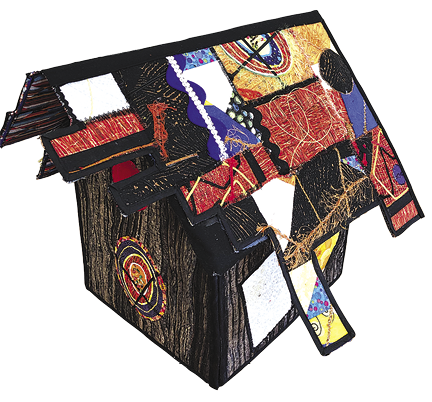
Get out your wallet; sit by your computer with your finger poised over the Bid button. The Mississippi Valley Field Naturalists Birdhouse Blowout Auction goes LIVE on April 12!
You’ll find the auction site at <mvfn.ca/birdhouse-blowout>, featuring over 20 birdhouses, veritable works of art created by local crafters who have worked for months to produce these magnificent pieces.
The auction will run from midnight on April 11 to 5pm on April 23. Bidders are encouraged to visit the site now so that as soon as the auction opens they can go after their favourites. The site is user-friendly, easy to negotiate and fun to peruse. Keep watching it for information on how to bid. It’ll be exciting to follow the action once the auction is live!
There will be prizes for the creators of the most popular houses, but it is a sure thing that the biggest winner of this auction will be the MVFN Cliff Bennett Nature Bursary. The organizers are thrilled with the way the community has embraced this project, especially for braving exceptional restrictions to make it happen. Bring on the bids, bring on the birds!
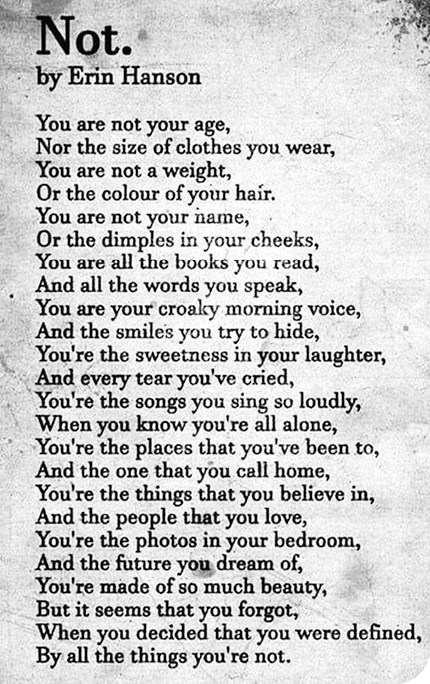
My sister Sue lives on Vancouver Island. I haven’t seen her since forever but we email nearly every day; so far away, but so close I can feel her warmth. She sends me those beautiful Jacquie Larson cards with flowers and bunnies when her daffodils bloom and ours are still hidden under the snow. She’s off to the greenhouse buying pansies, and I’m trying to figure out if I should put the snow shovel away. She’s sipping wine on the deck when I’m still tying laces on snow boots. She’s watching the herring run and the screeching gulls and sea lions; we’re glorying in the first robins. She’s power-washing her deck; we’re chipping ice off the driveway. She’s never needed snow tires; we’re scheduling an appointment in mid-April to get ours changed. But not to worry: when we have spring, theirs will be long gone.
Every day we trade stories of our friends and what they are doing: the good lunches by the sea, the birdhouse auction; their camper fired up for spring camping, our practice sessions with the dogs. We also trade recipes, although she is Emeril gourmet next to my kitchen cook-offs. We haven’t starved and are still alive, so it’s been all right, I guess.
Because Sue has a myriad of friends she gathers like a magnet, she often has tidbits of writing that she shares as well. She sends me these at the very moment I need them, either to boost spirits or to generate a laugh. Her sense of humour is such that their neighbour left them a loaf for fresh bread last week simply because she likes to hear them laughing together. How loving is that?
One of these tidbits comes from her friend Helen Ible, with whom Sue shared committee duties over many years serving their community. They both have a flare for living large with grand ideas that percolate into meaningful projects, and they continue to support each other with frequent conversations that I’m sure elicit merriment. Helen sends Sue bits of inspiration which are too good to shove in a drawer and forget.
To end what has been a beautiful spring day with robins, cardinals, red-winged blackbirds, nuthatches and chickadees, here’s Helen’s latest gift to Sue. I’ll pass it on as proof that we’re not who we think we are — half incognito in a mask, wrapped in the worn winter coat hunched against the cold as we trudge into the grocery store to buy seven things that weren’t even on the list. We’re way more: indeed, a veritable treasure of experience that shines through if only we could see it.
Now, put the snow shovel away, find the garden trowel, buy some seeds, and bring on spring!
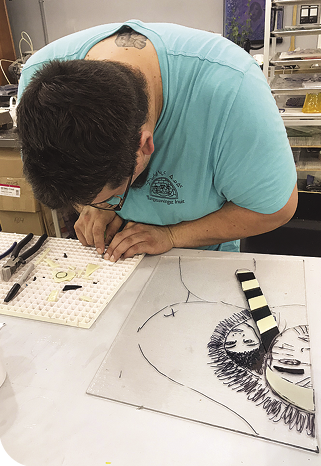
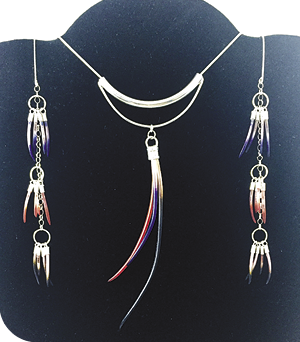
Art… and Soul
When I think of jewellery, I don’t usually think of walrus whiskers or whale baleen, but these natural materials feature prominently and beautifully in Kaajuk Kablalik’s distinctive pieces. Originally from Rankin Inlet, Nunavut, Kaajuk (friends call him Kaaj) loves working with the materials “from home” that inspire him to promote and preserve his Inuit culture.
He is used to questions about the unfamiliar components that make his earrings and necklaces so different from the usual fare available at shops and online. Did you know you could dye walrus whiskers vibrant shades of blue and red? Kaajuk’s favourite materials are ivory from the tusks of narwhals (the unicorn of the sea) and walruses, muskox horn, and baleen from bowhead whales. Baleen consists of keratin, the same substance found in human fingernails, skin and hair. It is a softer material of compressed fibre, once used in women’s corsets and misnamed whalebone, and Kaaj finds the baleen fun to work with. He describes the muskox horn as “very beautiful — very hard but yielding results with phenomenal depth and layers.”
An accomplished metalworker, he works with golds and silvers and brass, but uses them only to complement the natural beauty of his organic substances. “I see beauty in many things. Like a lot of places in Canada, the North is very beautiful. It can look barren, but when you look — when you really look — you find beauty in the detail. That helps me with designing my pieces.”
“Sivuniksattinu” — “For Our Future”
Jewellery is only one facet of Kablalik’s artistic pursuits. A few summers ago, his wonderfully supportive wife Jenna Rintoul signed him up for an introductory course offered by Valley glass artist extraordinaire Jennifer Anne Kelly (profiled in the October 2012 issue of theHumm). Hailing from the great frozen North, Kaaj still remembers how he suffered near her kiln in the summer heat, but the experience led to an amazing project that he counts among his greatest achievements in using his art to further his support of Inuit culture.
Kelly had a kayak frame and had been pondering the possibility of constructing a glass kayak. Kaajuk is a dedicated advocate for urban Inuit, and is heavily involved with Tungasuvvingat Inuit (TI), a not-for-profit service organization that provides support to Inuit throughout their entire life cycle. He is currently serving as the President of the Board <tiontario.ca>. Not only did TI have an authentic Inuit qajaq frame, the organization decided to support the project in partnership with the Neighbourhood Arts Ottawa program sponsored by Arts Network Ottawa.
The resulting 17-foot-long Sivuniksattinu Qajaq took more than two years to complete. Inuk Elder David Erkloo provided guidance to Alexander Angnaluak as he restored the weathered wooden frame to support over 70 glass panels, painstakingly created by Kaaj and Inuit artists Melissa Attagutsiak and Alexander Angnaluak, under the tutelage of Jennifer Anne Kelly.
The Sivuniksattinu Qajaq was triumphantly installed near the main entrance of the Ottawa Hospital’s general campus at 501 Smyth Road in January of 2020. It is a symbol of welcome to the Inuit community that the hospital serves, and a gesture of reconciliation. The inscription on the glass panel that describes the installation is in three languages — English, Inuktitut and French. On it, Kablalik explains to the three communities that the artwork: “…is a symbol of many things: culture, awareness, resilience, reconciliation and hope for the future… We wanted to present the piece in terms of recognizing and educating people about the history of Inuit in Canada from a darker past to a brighter future…”.
That is Kaajuk’s personal goal. He is fervent about preserving his native language and culture and it inspires every aspect of his art and life. Now the father of five boys, he is grateful that it was necessary for him to learn to speak his native tongue in order to talk to his paternal grandmother, because today he is able to communicate with the elders who don’t speak English.
Kaaj met his wife in Rankin Inlet where she had come to visit her sister, but like many Inuit, the couple have moved several times in pursuit of education and jobs. When Kaaj was in his early twenties they moved to Iqaluit to pursue his education through the Nunavut Arctic College. He did two years of a nursing program before deciding it wasn’t for him. He completed the jewellery and metal work program afterwards and is thoroughly convinced that he made the right decision. He is passionate about his art.
After the couple moved to Westport, he earned a diploma in business management and entrepreneurship from Algonquin College in Perth, and he recommends it to other artists as a highly worthwhile investment. Kaajuk’s grandparents on his mother’s side lived in the Almonte area, and he was familiar with Lanark County through holiday visits. When his wife found work in Ottawa, the couple moved to Almonte, and their sons are nearby.
When I commented on the amazing tattoo of a Snowy Owl on his right forearm, he explained that the Ookpik was his spirit animal. He cited a couple of experiences where he actually could have died, and both times an Ookpik was watching over him. He has a second tattoo of a raven on his other arm, also by his friend and fellow artist Sarah Wright, who does custom hand poke tattoos. Kaajuk also does custom pieces in collaboration with his clients, and I particularly admired an Ookpik ring. It turns out it was a custom order for his sister-in-law’s wedding, and his response to my enquiry was: “For custom pieces, it’s one and done.” That is the definition of unique.
When I asked him how he was coping with the ongoing stresses of the pandemic, Kaajuk responded with his characteristic optimism and good will. He feels lucky to be able to work from home and to set his own hours; he doesn’t have much trouble selling his work, and he feels very fortunate and very grateful. When I commented on his positive outlook, he replied, “I really try hard to put the same kind of energy into all the work I do. I feel the pieces I create need to come from a good place in my heart and soul. A little piece of me goes into each piece I make.” The back of Kaajuk Kablalik’s Trading Card on the next page contains the coordinates you need to contemplate the results of his exceptional outlook.
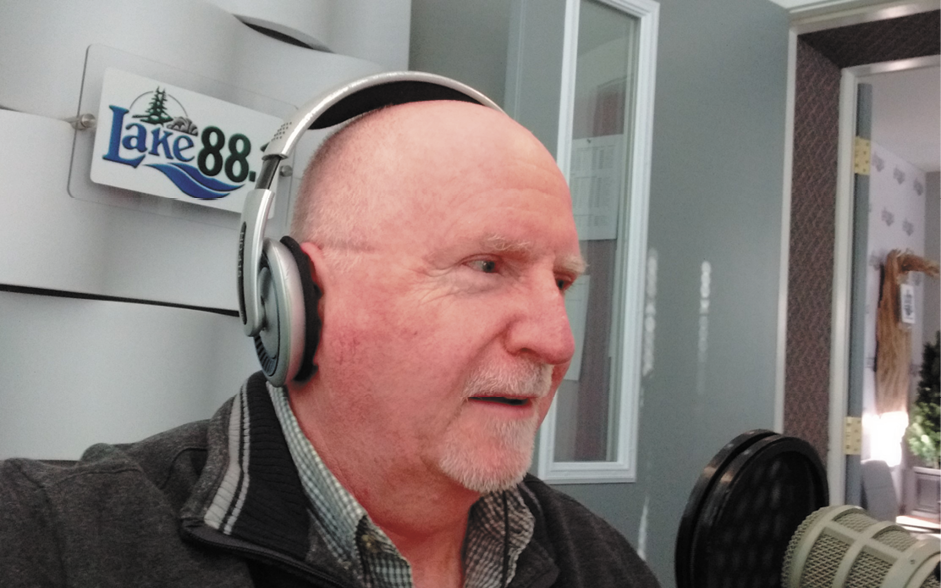
Back in 2009, theHumm interviewed Brian Perkin about his then two-year-old radio station, Lake 88.1 <lake88.ca>. Based in downtown Perth, the station has spent the intervening years covering local events, promoting area businesses and initiatives, interviewing interesting folks, and generally providing an independent on-air voice for this part of the Valley. Recently, we discovered that Brian has made the difficult decision to sell Lake 88.1 to Renfrew-based “My Broadcasting Corporation” (MBC). We contacted him to find out the details, and to ask about his decades-long relationship with radio.
theHumm: Let’s start with the good stuff. What have been some of the highlights of running an independent radio station for the past 14 years?
Brian Perkin: As an independent, we’ve had the freedom to make our programming truly local to reflect what’s happening in the smaller towns and communities in our coverage area. Few news stories or events are too small for us to talk about. We’re not covering the Middle East, we’re covering the middle of town in Perth, Smiths Falls, Carleton Place, Westport, Almonte, Lanark, etc. And people appreciate information that’s relevant to their lives.When my original partner Norm Wright and I were creating the station back in 2007, we really wanted the local communities to “use” the station — literally — by coming in to do interviewers, calling in on-air, doing their own commercials and having their voices heard. Norm retired from the station seven years ago, and unfortunately passed away earlier this month, but I know he would be proud of the way our listeners have accessed the station over the years and made it their own.Another highlight for me in running this station is that it’s been so much fun to work with an amazing staff. Many of us have had radio experience in larger markets and worked with the big chains. But these pros have gravitated to working in a small market and are loving it. Everyone here gets to influence the programming, contribute ideas and then get them on the air.I also love the fact we are have four stations packed into one. We run a heavy news schedule, with interviews; a Saturday home renovation talk show; and my “fave” — Lacey’s Trading Post — with everything from bargains to blackfly reports. Our main music format is adult contemporary, but we rock it up with the oldies on the “Classic Cruise” on Saturdays, and then lay back with softer music Sunday mornings. On top of that, we cover the local Junior hockey beat and then feature world-class hockey with the Senators broadcasts. It’s not a juke box. For a small staff, we do a lot on the air.
Lake 88.1 has provided such stalwart support for area businesses, organizations and initiatives over the past years. Why is it important to have truly local media outlets like yours?
Even though there are thousands of audio services available now, listeners still crave local news, sports, weather and information about local schools, government, events — everything. Although we’re surrounded by 29 stations from Ottawa and dozens of others from Kingston and the U.S., no other station is reporting on our particular communities. We continue to hire news people to cover Perth, Smiths Falls, Carleton Place and Lanark County councils, as well as our broader region. People still want stories on their local government, the business scene, area hospitals and schools, etc. But not all small markets are being served with an emphasis on local news. Local newspapers and radio are having a tough time as advertising revenue migrates to the web, and that in turns affects staffing. The federal government is working to force Facebook and Google to share ad revenue they get from content created by local print and broadcast. I feel we need to support local journalism and local radio. And for the national chains, it can’t all be about shareholder return. If you’re going to hold a broadcast licence in a market, you should have to keep staff in that community to serve it adequately.
Your press release mentions that there will be no immediate changes to programming and staffing, and that you will stay on as station manager for the next two years before retiring. Was retirement part of the reason that you decided to sell the station at this time, and can you tell us a bit about MBC?
In reference to the earlier question, one of the reasons we’re joining MBC is their commitment to have “boots on the ground” — local studios and staff in the towns where they operate, unlike some major radio chains that are running some smaller stations solely from other centres. MBC is currently re-organizing their properties, and will soon have 16 stations in Ontario, specializing in smaller markets. I think Lake 88 will be a nice fit with the eastern Ontario stations in Pembroke, Renfrew and Arnprior. We’ll have a lot in common as smaller towns circling Ottawa.It’s been a tough decision for myself and my wife Jennifer, who co-owns the station. I still love radio, but at some point you have to make plans for retirement. It’s the best of both worlds, as we get all the paperwork done now, along with approval from the CRTC, but I still get to continue running the station for the next couple of years with all our staff in place.
Having spent over 40 years in radio, what do you think the future holds for the medium?Naysayers thought radio would die because of television, but it became local and stronger. Then along came satellite radio, and traditional radio remained. Now it’s streaming services and online music, but local radio remains. If owners properly staff their stations and let those people produce good, local programming, radio will always have a unique service to provide audiences and advertisers. It’s immediate, it’s local and it works.
I’m sure you have an interesting perspective on how Covid has affected local businesses, and particularly performing artists, events and venues. In your opinion, how can people best “support local” to help our area rebound from the pandemic?Of course we’re big advocates of supporting local business. Businesses buy advertising, and in turn, that allows us to provide our service, cover local news, programming — everything we do. And it’s the same for other local businesses, providing jobs, livelihoods and services for the community. We’ve encouraged folks to order-in from our area restaurants during the pandemic. Our “shop local” campaigns, along with the area Chambers of Commerce and BIAs, ask residents to give our local retailers a shot. Call them, safely visit them and hear what they can offer instead of instantly deferring to the online giants. For our local performing artists, most have CDs and merchandise we can buy, even though we’re missing their concerts right now. And if you’re able, a simple donation would go a long way to help out our local non-profit groups who run our annual music festivals, art shows, sport events and bingos. We want them all back and running when this pandemic ends.
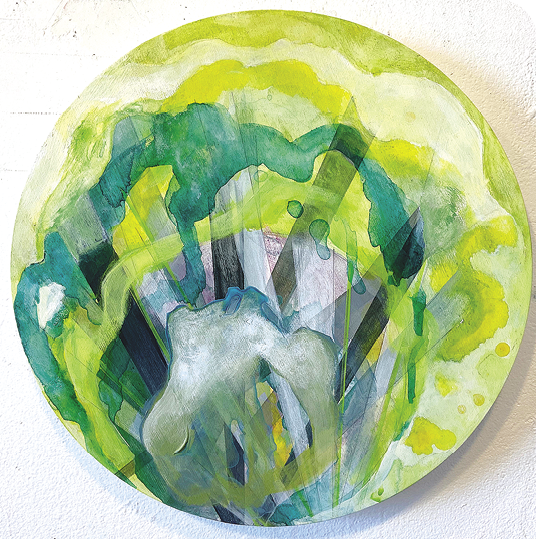
From March 31 to May 7, Sivarulrasa Gallery in Almonte is pleased to present Sarah Anderson: Let’s Be Alone Together, a solo exhibition of new paintings by artist Sarah Anderson. Based in Ottawa, Sarah works with techniques of abstraction. She sees colour as a powerful tool for the expression of emotion. Her paintings are influenced by her observations of people and relationships in everyday life, most commonly by themes of family. She is interested in “where we come from, how every aspect of daily life, whether seemingly inconsequential or not, ultimately influences who we are and what we make of our lives.”
The new body of work in Let’s Be Alone Together is inspired by a lyric from the song Waiting for the Miracle by Leonard Cohen (co-written with Sharon Robinson) from the album The Future (1992). “I listen to music constantly while painting”, she says. “Sometimes it occupies the background, other times it plays a key role in my artistic process.”
Sarah’s works are at once nuanced and ecstatic, reflecting the joys and turbulence of everyday life. Light and dark intermingle as themes of exuberance and melancholy. “We are always alone with ourselves,” she says. “Even if we aren’t physically alone, no one else is living our life and therefore the reality is that we are all alone… together.”
Sarah Anderson earned her Bachelor of Fine Arts degree from the University of Ottawa in 2002. Her studio practice has been based at the Enriched Bread Artists (EBA) studios in Ottawa since 2005. Her work has been exhibited in solo and group shows in Ottawa and Toronto and is held in private and corporate collections in Canada, the United States and Switzerland.
From 7–8pm on Wednesday April 7, everyone is welcome to join live via Zoom for an Artist Talk and Virtual Vernissage at which Sarah will speak about her work and inspiration. Please email <info@sivarulrasa.com> and you will be sent the link.
Sivarulrasa Gallery is located at 34 Mill Street in Almonte. Find more details at <sivarulrasa.com>.
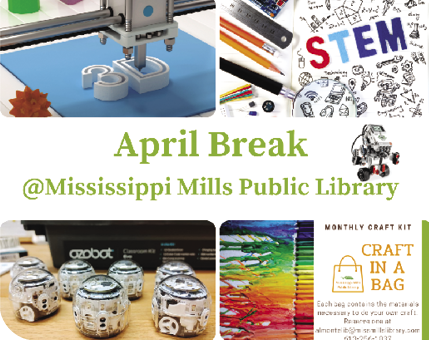
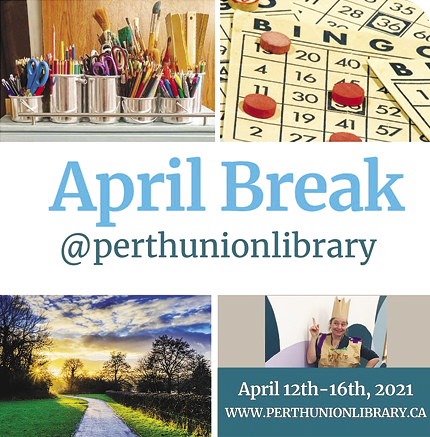
Now that “April Break” is a thing in Ontario, our local libraries are rising to the challenge of helping keep kids busy and happy during their week off. Here is a round-up of area offerings:
Spring Break Smiles at the Arnprior Library
Is anyone ready for a break? At the Arnprior Public Library we are gearing up for a week of fun activities in April. In addition to offering two readings a day of titles nominated for the Forest of Reading Blue Spruce Award, culminating with voting on Friday, April 16, we will also be hosting daily visits with some interesting and unique pets in our community. Our guests will include llamas, goats, a miniature horse, chickens, ferrets and a hedgehog!
Two virtual LEGO Lounges will be held, as well as a virtual game of BINGO with prizes! We will be hosting a Pop Up Painters event and will be painting an amazing picture of a polar bear. Two different escape room events with Looking Glass Adventures will be offered. One is for children aged 7-11 and the other is for ages 12 and up.
Details of dates and times, as well as online registration, are available at <arnpriorlibrary.ca>. A library membership is required to register, so if you need to acquire a membership or update your existing membership, please visit the library before registering. If you have any questions, please reach out to Carolyn at <youth@arnpriorlibrary.ca> or 623–2279.
Carleton Place Public Library Celebrates!
Get ready to “Explore Your Space” with the Carleton Place Public Library from April 12–16. Launching that week are space-themed virtual activities as well as a week-long “Follow the Story” adventure that will have the community dancing and skipping from business to business downtown. Explore local spaces and have some fun that is out of this world!
The week will blast off with daily virtual escape rooms for kids on our Facebook page, and will include a live storytime on Wednesday, April 14 at 10am; Astronaut Training on Thursday, April 15 at 10am; and Silly Science fun on Friday, April 16 at 10am!
Stop by the Station at 132 Coleman Street anytime that week to pick up one of three take-home craft kits, and a special seed kit for kids to plant and grow at home as part of the Good in Every Grain program in conjunction with the Southern Ontario Library System and Ontario Library Service North.
Finally, it is the Library’s 175th anniversary this year, and that means presents! Pick up a “Follow the Story” map at the Station starting on April 1 and visit all of the locations in downtown Carleton Place to complete the story from April 12–16 and see what Beaver chooses as a present for the library. Afterwards, there will be a small prize to pick up back at the Station!
For more information about these and other ongoing programs, visit <carletonplacelibrary.ca> or call 257–2702.
Camps, Crafts and Fun atMississippi Mills Libraries
Almonte & Pakenham Library branches will be offering April Break Stem Camps for ages 8 and up, from 10am to 3pm. Join the fun with LEGO and Ozobot challenges, 3D printing and Tinker CAD, video game design and coding with Scratch and Code org! Choose your dates soon, as space is limited. You can find details and register at <missmillslibrary.com/special-programs>.
Covid-19 restrictions in place: all participants must wear a mask, maintain social distance and sanitize their hands. Limit of 8 participants with individual stations and materials. Materials and stations are quarantined and sanitized between workshops.
Spend some fun time creating and experimenting at home and reading with your kids and teens! Pick up your STEAM (science, technology, engineering, art and mathematics) themed “Craft in a Bag”. Each bag contains all the materials, instructions and some surprises. The themes for April are Earth Day Seed Bombs for kids (ages 5 and up) and Earth Day Recycled Crayons for teens (ages 10 and up).
Looking to involve younger kids? Pick up your Story Time Craft Kit preschool bag with all the materials to make crepe paper flowers and a spring-themed craft at home. The bag also contains rhymes and finger plays. Follow the Story Time Facebook group to participate in story time videos with Monica!
Word Walk at Perth Library
The Perth and District Union Public Library will be offering many fun activities during the upcoming April school break.
The library is excited to partner with the Town of Perth and Tay Valley Township to launch their first Word Walk. First launched at North Grenville Public Library, participants visit the Word Walk and use the words to create their own poem, sentence or short story. Community members of all ages are invited to pick up a notebook and pencil at the library starting Monday, April 12, and then walk or drive to the Last Duel Park in Perth or the playground in Maberly. Participants can search for words that have been placed in both areas. Write down the words you find and submit a poem, sentence or short story using the words you have collected. Submit your completed works to the library by April 23. April is National Poetry Month, so let the creative energy flow. There will be prizes for children, teens, and adults!
The library will also be hosting a virtual Bingo Party! Play along with Heidi Taber, the Children and Teen Services Specialist, on Tuesday, April 13 at 1pm, through Facebook Live. Bingo cards will be available for pick-up at the library and there will be small prizes for the winners.
The library’s ever-popular Take and Make Kits will be tripled for the week. Three unique kits will launch Monday, Wednesday and Friday. The kits will be available for pick-up at the front desk or through curbside.
Finally, the library is excited to host a brand-new virtual workshop with Scientists in Schools on Friday, April 16 at 1pm. Space is limited for this workshop, so please contact the library to reserve your spot. You can email <info@perthunionlibrary.ca> or call 267–1224. To learn more about the services and programs offered, visit <perthunionlibrary.ca>.

Ontario By Bike <ontariobybike.ca> is offering a Webinar entitled “Destination Bike — Welcoming Cyclists in Lanark County” on Wednesday, April 28 from 10am to 11am.
The Ontario By Bike Network certifies tourism businesses and locations as bicycle-friendly, helping businesses reach the growing number of cycle tourists in Ontario, promoting and further developing cycle tourism in destinations across Ontario.
Now more than ever, cycling and cycle tourism is increasingly popular. This webinar will familiarize participants with the cycle tourism market and outline how welcoming cyclists can be good for business. Hear about updates to local, regional and provincial promotions and projects supporting cycling and cycle tourism, and get updates on cycle tourism market impact, forecasts and industry recovery. Get a refresher on certification criteria for bicycle friendly businesses, and uncover new business opportunities!
The Network is open to accommodations, food service providers, destination attractions, business areas and other cycling-related businesses wanting to attract cycle tourists. Register for this webinar at <ontariobybike-lanarkcounty.eventbrite.ca>.
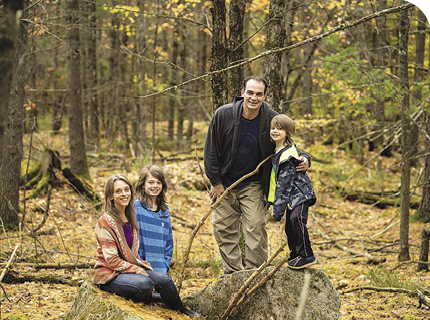
This month, to celebrate spring after our long Covid-y winter, we are focusing the Climate Network Lanark column on our Nature-Based Climate Solutions Working Group and several of its initiatives.
To begin, let me introduce Jay Young, the coordinator of this working group. Jay lives outside Clayton with his wife Amber, who teaches yoga and is a massage therapist, and their two boys. As a project manager with Carebridge Community Support, Jay leads the development of the Neighbourhood Tomato Community Farm Project (check them out on Facebook!).
Prior to taking on this position, Jay was the project manager of Generation Sustainable Development Goals for the United Nations Association in Canada. Throughout his professional career he has been an editor with the House of Commons, a writer, and an educator and director of operations with Canada’s first Forest School, formerly located at the Carp Ridge Learning Centre. Jay loves his adopted home of Mississippi Mills. Living rurally surrounded by rocks and trees, he and his family deeply appreciate being immersed in the bounty of our natural heritage. His passion for environmental education and community sustainable development are evident in his work helping the community come together to address the challenges and opportunities we all face.
But it’s Jay’s work with CNL’s Nature-Based Climate Solutions Working Group that I want to explore here. I asked him to tell me more about what they are working on in Lanark County. My first question to Jay seems pretty obvious: What’s the issue with climate here? We have lots of forests, lakes, rivers and many beautiful places to enjoy nature all around us. It seems that all climate solutions are nature-based, aren’t they?
Jay responded with so much information that it’s going to need its own page on the nearly launched CNL website (see note below). Here it is in a nutshell:
Nature-Based Climate Solutions (NBCS) are local solutions that take advantage of nature’s systems to provide multiple economic, environmental and social benefits. They provide mitigation and adaptation strategies to address the climate crisis, particularly biodiversity loss and species collapse. In our CNL working group, we hope to work toward solutions that focus on local natural infrastructure, protected areas, restoration and improved management of our forests and agricultural lands.
Even in Lanark County, a region known for sugar bushes and acres of natural heritage, there is urgent need to work to preserve and protect all this seemingly boundless natural abundance. Issues includemanaged forests, lumber and other resources sold beyond the borders of our communities, and crucial wetlands that are increasingly encroached upon by urban development with little consideration of the long-term consequences of these actions. We will act to better understand the natural and political landscape of Lanark County, so that we can identify, advocate for and drive NBCSs most suitable and effective to this place.
As a father, I know deeply that we need to consider how we want our County to look in 10 years, 20 years, 50 years. What kind of natural endowments do we want to leave our children?
There is so much we could talk about here, but going to the website will be really informative. There we will cover our work with Nature Canada, the regional conservation authorities, all levels of local government, and the work to bring the Alternative Land Use Services program <alus.ca> to Lanark County. We will be looking into how climate change will affect the forests, the aquifers, reduced rainfall, snowmelt or lack thereof, increasingly damaging storms, new insect pests, and invasive species. We want to have an overview of wild spaces, crown land and protected areas to make sure they have long-term protection. We will outline all the conservation tax incentives for protecting land and more.
There is so much to this topic of Nature-Based Climate Solutions. We have tremendous opportunity and lots of people eager to help. All the CNL working groups would love to hear from folks who want to participate in these proactive climate projects.
The Two Billion Tree Program
Here is a Nature-Based Climate Solution everyone can get involved with: in 2020 the federal government announced a Two Billion Tree Program, and provincial and municipal governments have adopted this initiative across Canada. Lanark County has challenged its communities to plant one million trees by 2023, and with County and municipal oversight these goals can be met.
Here are some links to help with tree-planting in this area:
Rideau Valley Conservation Authority, Trees for Tomorrow Reforestation Programs:rvca.ca/stewardship-grants/tree-planting
Home Hospice North Lanark Annual Tree Sale: trees.hhnl.ca
Lanark County 1 Million Trees Project Tree Sale: twp.beckwith.on.ca/lanark-county-1-million-trees-program/
For information about how to successfully plant trees (including hot tips from Master Gardener Allan Goddard), read the longer version of this article at <thehumm.com>.
NOTE: Climate Network Lanark is getting ready to launch a comprehensive website that will be a go-to resource to learn about everything that is going on in the county to address the Climate Crisis. There you will find more in-depth information on the initiatives of the Nature-Based Climate Solutions Working Group, as well as a fuller explanation of the work of all the 9 CNL working groups. Information on the website launch will be forthcoming in theHumm. It’s a labour of love, and you will be able to find everything you need to get involved with and learn more about the Climate Crisis and our community. Stay tuned!
The League of Canadian Poets (LCP) has celebrated “Poem In Your Pocket Day” annually since 2016. As a dedicated non-profit focused on supporting poets and poetry in Canada, LCP believes Poem In Your Pocket Day (April 18) is a beautiful way to deliver poetry and conversations about the arts into homes, offices, community spaces and more. In April, the LCP will mail out postcards featuring the selected winning poems from their annual Poem In Your Pocket Day Contest to all 900+ members of the League, and they encourage everyone in Canada to select a poem, carry it with them, and share it with others at schools, bookstores, libraries, parks, workplaces, street corners, emails, virtual spaces, and on social media.
Visit <poets.ca> for full details and to learn more about the League of Canadian Poets.
One Poet’s Experience
One of the very best parts of developing as a poet has been reading the work of other poets. In an era of shortened attention spans, poetry’s commitment to the brief and essential is kind of a perfect gift. I like to think that poetry will be read more widely as our collective attention has yet more demands placed on it.
My personal education in poetry has been unstructured, to say the least, and alongside it my development as a poet. I started writing poetry in earnest just a few years ago, after reaching midlife with the realization that I had sidelined my interest in writing for twenty years. Raising a family, being self-employed and definitely overly scheduled, like many others, I’ve had to shoehorn time into my life to make it happen.
Online classes and workshops, an amazing mentor whom I’ve yet to meet in person (the US poet Jason Schneiderman), and the drive to “do something” with my poetry has led to a personal poetics that I’m feeling good about. The first year of the pandemic saw a nice flurry of poems picked for publication by journals in the US, Australia, and the UK, but I realized that I was missing something in not finding some small way to try to take part in the Canadian scene.
Enter the League of Canadian Poets, a wonderful membership-based organization with a mission of supporting poets and growing awareness of poetry in Canada. I’ve loved discovering the work of new and established poets through LCP’s various campaigns, including their daily email “Poetry Pause”. A couple of their contests felt like they could be a good fit for some of my work, so last fall I submitted some poems and waited.
How amazing, then, to find a poem of mine picked for their 2021 Poem in Your Pocket (PIYP) campaign! It’s really exciting to consider that my work will sit alongside the work of some amazing Canadian poets this month.
A great way to get to know Canadian poets is to sign up for the daily email “Poetry Pause” (or follow the LCP on Facebook). In 2021 two of my poems will appear in “Poetry Pause” — one as part of PIYP, and another this summer.
At Dusk
At dusk the woods shift closer,
shadows melt across
my shoulders.
Here, the nose puckering scent
of rotten apples
sharp, ascends.
Unseen roosting birds decry
my presence. Flustered,
tensing sky-
ward—dark wings undone,
one by one.
“We Serve” — that is the simple, to-the-point motto of the world’s largest service club, begun in 1917. It is a motto that the Almonte Lion’s Club has been dedicated to locally since 1947. Home Hospice North Lanark, incorporated in 2013, is a relative newcomer. But the organizations find common ground with their commitment to serving their community with passion and compassion. They are also 100% volunteer-driven and funded by donations and targeted fundraising efforts.
Fundraising has been a challenge over the last year for all organizations that depend on it. Both organizations are grateful for the support they continue to receive, but the reality is that donations are down. And the people in our community who need help still need help — perhaps more so than ever.
The Lions Club is well known for its support of local projects such as Christmas Food Hampers, the local Food Bank, and Scholarships and Bursaries at Almonte and District High School. Their annual volunteer “Toll Bridge” held in support of CNIB, their gladiola sale and support of the local hospital are other examples.
Home Hospice North Lanark is a “Hospice without walls.” They provide compassionate in-home support — wherever home may be — for adult clients and their families who have received a life-threatening or terminal diagnosis. Services are provided in the North Lanark area by a trained volunteer, in a confidential, respectful and client-centred manner under the supervision of a Registered Nurse.
As the saying goes, two heads are better than one. With that in mind, the two organizations have decided to launch a sale of rain barrels. The cost of the barrels is only $70, and includes leaf and mosquito filter basket, spigot/tap, overflow adaptor and overflow hose, and delivery right to your door! Funds raised will be shared 50-50.
It’s easy to order. Simply visit <RainBarrel.ca/AlmonteProjects> and place your order by Monday, May 24. In late May or early June your items will be delivered just in time for gardening season. There is also a link on the <hhnl.ca> website.
There are so many good reasons to use a rain barrel — you’ll save water and money, protect local waterways and reduce runoff, pollution and erosion — to name just a few. And your plants and flowers will enjoy being watered by water warmer than what comes out of your hose. And if you supported HHNL by buying a tree or shrub, a rain barrel will help you keep it healthy!
If you have any questions, or prefer not to order online, you can call The Lions Club at 1–833–546–6725 or email <rainbarrels@hhnl.ca>.

“I wish I had a…” says a friend while we are hiking. “Oh — I have that, one second,” I reply. She looks at me deadpan and says, “Of course you do”.
It is a well-known fact that I hike with enough kit to earn all the boy scout badges, and yet still keep my day pack light enough that it’s not a burden. Where did this insistence on being “always prepared” come from? Well, mostly from an experience in the military while deployed over twenty years ago. We were about to head out on a vehicle patrol, so I grabbed a bag and filled it with extra everything. Extra water bottles, food, garbage bags, first aid kit, note pad and pencils, blanket, tarp, glowsticks, etc. At first I was oh-so-lovingly made fun of by my coworkers, then during the patrol we came across a roadside accident involving over thirty people — we used every single item that I “overpacked”.
Since then, it doesn’t matter if it is an inner-city trail or challenging mountain track; I have my trusty day pack with all-the-things. In fact, there is also a “post-hike kit” and “car kit” in my car at all times.
Over the years, almost every item has been used and deemed well worth carrying. They’ve been used on everything from kids with scraped knees to injured dogs to fixing gear.
So, what should you carry while hiking? Well, while my uncles tend to walk miles in their jeans and runners without even a bottle of water, and have for years, this isn’t the recommended choice when out enjoying nature. A great start is the “ten essentials”. This includes navigation, headlamp, sun protection, first aid, knife, fire, shelter, extra food, extra water, extra clothing. What do I add to that list? I would add bug protection, tweezers or tick key, bear spray, cell phone charge pack, chewable aspirin, hand sanitizer and mask. For those who often hike solo in areas with no cell reception, an emergency beacon.
Ouff, that sounds like a lot, right?! It’s not that horrible, thanks to most emergency kits nowadays being compact, and it all fits easily in a small day pack. Do you need all-the-things when walking inner-city or in-town trails? No, but use best judgement to consider a few of the essentials.
And since spring is in the air, here are a few extra insights:
Early spring is considered “mud season”, and in order to protect our trails and ecological efforts always remember to hike through the mud and not around it. This can impact stability, so hiking poles and micro/nano spikes come in handy in these instances.
Opting for inner city/town trails that are paved (or boardwalks) and choosing trails with southern exposure will also reduce the mud-factor (increased sun and drier trails).
In that “post-hike kit”, bring extra socks and shoes/boots. Brush off your hikers at the trail head or parking lot prior to leaving to minimize the possibility of spreading invasive species to other areas.
Tick season is here, and it is safe to assume that every trail has ticks. To help minimize the risk, choose trails with wide paths, use a sticky lint roller post-hike to help remove/identify ticks, shower once home and do a body check, and put your hiking clothes in the dryer for ten minutes.
Do not leave bear spray, bug spray or hand sanitizer in the car as they are temperature-sensitive.
Always check out Covid zoning restrictions prior to setting out, and follow public health guidelines.
The moral of the story is to do your best to be informed, prepared, and practice responsible recreation to make the most of the hiking season ahead. Getting outdoors is a wonderful boost to our wellbeing and I’m pretty sure we could all use an extra bit of vitamin D. Aim for fresh air, every day, even if it’s sitting on your front steps and saying hey to the neighbour or opening the windows. Do your best to do your best — everyone I chat with, myself included, is feeling “it” lately. You are not alone. Cheers to forever finding our “wellth” in the wilderness!
There are free packing lists for your day pack, post-hike kit and car kit available on <girlgonegood.com> under “resources”. There is a Trail Finder Map with detailed trail reports under “trails”. The Ultimate Guide to Spring Hiking and Gentle Hikes for Ottawa and Region are both posted. You can read the full story about the aforementioned roadside accident (trigger warning: trauma) by searching “trauma” on on <girlgonegood.com>.
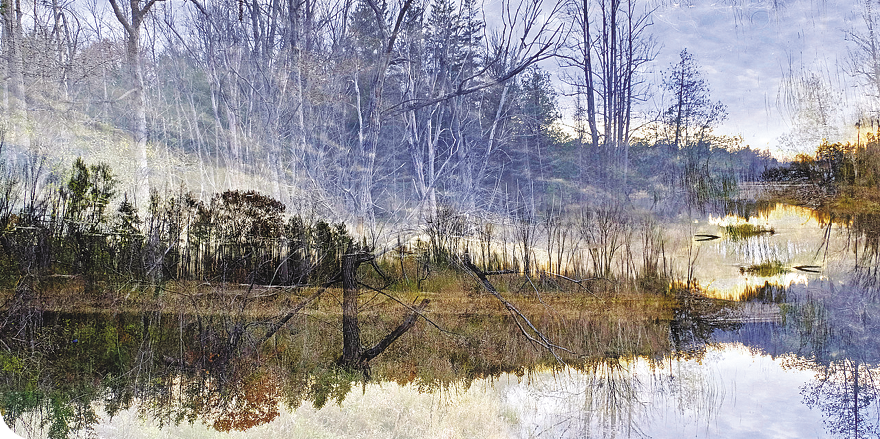
Rub the sleep out of your eyes and give a good stretch! Come out of hibernation and welcome spring surrounded by incredible original works by local artists. On Saturday, May 29 and Sunday, May 30, Arts Carleton Place presents their annual Spring Fine Art Show and Sale at the CP Canoe Club at 179 John Street, from 10am–4:30pm each day. Both parking and admission are free.
The arts kept so many of us afloat during the past year: musicians gave online concerts; galleries offered online exhibits; groups of friends gathered for online paint nights; local dance schools moved their classes online. It is easy for us to see how important the arts are to our lives. Art was a medium for us to communicate with one another, share, explore, heal, and be part of something beautiful, even when we were stuck at home.
This spring, you can be a part of something beautiful and celebrate creativity and artistry along the banks of beautiful Riverside Park. Immerse yourself in the works of 22 juried artists from across the region. Join Arts CP in appreciating the value of the arts in our lives as you discover the works of local artists.
Restrictions will be in place to ensure everyone’s safety. Visitors will need to wear masks and social distance. The floor will be marked to help visitors and patrons follow the social distancing guidelines, including waiting to advance to the next kiosk only once the next spot is vacated. There will be a maximum number of guests and artists at any time. Visitors will also need to sign in for purposes of contact tracing; however, this will make them eligible for a gift basket of goodies!
If you are interested in purchasing a piece, you just remove the price tag and take it to the cashier table. Please allow the artist to carefully remove the art and take it to the wrapping table for you. It is best to not remove or handle the works to prevent damage and breakage. There is a show special of $25 off a total purchase of $400 or more.
There is no charge to enter the Fine Art show, but donations will be accepted for the Arts Carleton Place Bursary Program. Portions from the sale of each piece will also go directly to the bursary program. The Arts Carleton Place Bursary Program continues to be a valuable award presented to students studying the arts at a post-secondary institution in the upcoming year, and is presented to students from both the high schools here in town. Local youth have had a difficult time with the limitations of studying at home this past year — new rules and regulations of the in-school environment often meant a reduction in arts classes.
Special thanks to the Town of Carleton Place for their assistance in putting on this show!
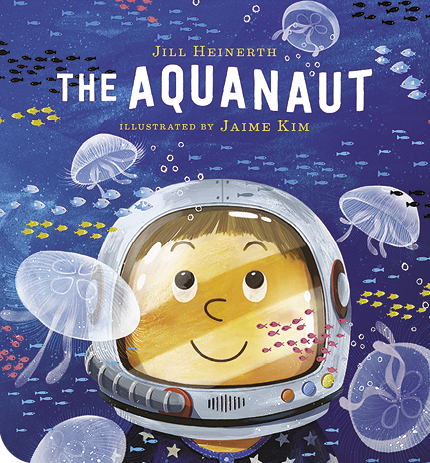
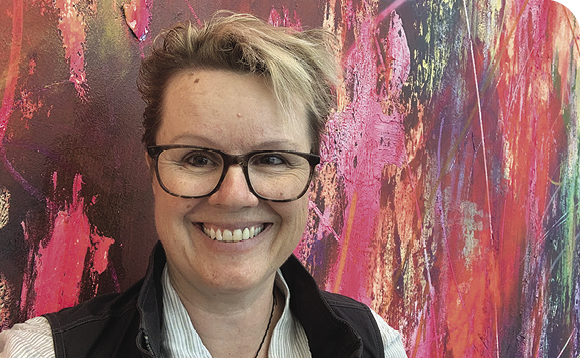
Carleton Place resident Jill Heinerth is a Canadian cave diver, underwater explorer, writer, photographer and filmmaker. She is a veteran of over thirty years of filming, photography and exploration on projects in submerged caves around the world. Jill is the first Explorer in Residence for the Royal Canadian Geographical Society, a Fellow of the Explorers Club and member of the inaugural class of the Women Divers Hall of Fame. She has made TV series, consulted on movies, and written several books, including Into the Planet — My Life as a Cave Diver. Her most recent book, entitled The Aquanaut, is for young readers. Jill recently got some delightful news about The Aquanaut, and was kind enough to share it with theHumm!
theHumm: We saw on your Facebook page that The Aquanaut has been chosen by Dolly Parton to be part of her amazing Imagination Library! What does that mean for the book, and what does it mean to you to have your book chosen?
Jill Heinerth: When I first learned about the selection, I literally cried. I think Dolly Parton is an under-appreciated saint. Her charitable efforts tackle the root of lots of issues. She’s given millions to fight Covid and produce vaccines, and yet, I still feel like her mission to spread children’s literacy is even more consequential. I grew up with lots of books to read and access to a nearby library, but that is not the case for most kids. Thanks to her help, 8,000 kids will get a personally addressed package with a copy of my book. I hope it inspires readers to think big and recognize that they can achieve their wildest dreams.
According to Penguin Random House, The Aquanaut encourages readers to “explore their world, build their self-esteem and imagine what they can do and become when they grow up”. How did your own childhood imagination help set the stage for your amazing career, and why do you think it’s important for society to foster inquisitiveness in young people?
As a small child, I was always thinking outside of the box. I had terrific schoolteachers who stimulated my curiosity and encouraged me to explore many different avenues of investigation. I performed well in school, but I was often unconventional and a multi-disciplinary thinker. Fortunately, they recognized and nurtured that.
Today’s youth are facing a challenging future. Climate change and rapidly evolving technologies make it tough for today’s school curricula to keep up. We need critical thinkers and explorers more than ever. The careers of tomorrow will require multi-disciplinary collaborations, mobility and creativity. If we can hang onto the enthusiasm, optimism and sense of possibility that we had as kids, that will serve us well. Conformity and caution will not solve the big problems that we face as a global population.
For folks who haven’t (yet) read your memoir, can you talk a bit about how you got started in your extraordinary career, and where it has taken you?
My book Into the Planet — My Life as a Cave Diver is a memoir about my life as an explorer. It takes readers diving inside icebergs and underwater caves around the world, but it is far more than just adventure. I wrote the book to address the topic of fear and discovery. In that way, it feels like a book for our current times. I hope it helps people learn about the wonders of a world they might never have imagined, but I also hope it helps people unlock their full potential and find optimism in a dark time.
I am so impressed with the breadth of your writing. You’ve got some fairly technical titles, one other children’s book, and your more recent adventure memoir. But your website also lists some intriguing documentary titles, including We Are Water and Real Sobriety. What are some of the most important messages you would like to share through your work?
Most of my scientific work these days involves communicating about climate change and water literacy, but I am also interested in other social issues. When I met my husband Robert fifteen years ago, he shared that he was in recovery. I knew nothing about addiction and recovery and wanted to help him tell his story in a way that would support the families and friends of an addict or person in recovery. I wanted to know how to support him and others. That led to making a film about modern recovery.
Every time I take on a new writing, photography or filmmaking project, I face a big learning curve to digest as much as I can about the subject. I also act as a test pilot and consultant for many different underwater technologies — from advanced life support devices to underwater AI mapping robots. As an expert working in difficult underwater environments, I must become the hands and eyes of the scientist or engineer that I am working with.
Director James Cameron has said: “More people have been to the moon than to the places that Jill Heinerth has explored deep inside our watery planet. A world-class technical diver and filmmaker, Jill’s extraordinary path from under Antarctic icebergs to tropical blue holes is proof that real life is far more exciting than fiction.” How have all of the Covid restrictions impacted your work and life, and what advice do you have for people once we can get back out and explore our world again?
Like so many others, the Covid crisis sort of cut me off at the knees. I work as an independent contractor and self-employed creative person. Suddenly, all of my work was canceled. That was very stressful. I went from 200 days a year in the field to isolated at home with Robert. That turned out to be an enormous gift. We have concentrated on learning new skills and launching new ideas. We even launched a Canadian-made, eco-friendly line of apparel at <MapleProud.com>. This gave me a chance to use my artistic work to create colourful clothing and home décor. But I am still in the exploration and science game. I am exploring Canada’s longest underwater cave near Ottawa and working with Dr. André Martel to document some incredible endangered species therein. I am really excited about our work together. He is very generous with his knowledge of malacology and system biology and I can bring him data from a place he cannot reach. Together, I believe our work will contribute to a better understanding of the watershed and our ability to protect it.
Once we have all had a chance to get vaccinated, I look forward to hugging my Mom and Dad more than anything. We will all emerge from the Covid-times with a better understanding of the interconnectedness of our planet and a better appreciation of the importance of our connections with family and friends. I can’t imagine wasting a moment without living and loving fully and completely.
Find out more about Jill, her books and her work at her website <intotheplanet.com>!
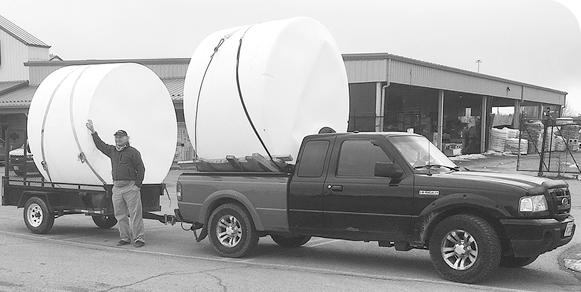
Amazing and extremely generous communities! The Lanark County Food Bank (branded as The Hunger Stop) has been overwhelmed by the response of our communities to the needs of our most vulnerable folks as the pandemic has exposed serious cracks in our social support structures. We have received local financial and food donations that continue to astound us.
But generous folk have also enabled us to find new ways to help the community: thanks to very generous land-owners and grant money from federally-funded programs, we have been able to create an amazing opportunity to produce large quantities of fresh produce with our “Blakeney Project”.
The Blakeney Project is a two-acre farm field and a 3000-square-foot barn. The land is a small irregularly shaped parcel that is not suitable for modern industrial agriculture. For the last twenty or more years it has been used mainly for sheep pasturing and some harvesting of hay. A very important aspect for us is that the field has been farmed organically — some Food Bank clients have disabilities and some are very sensitive to chemicals.
The Lanark County Food Bank has a fair amount of experience raising fresh produce, having been involved in a dozen or so community garden projects over the last few years. Projects last year included a 3000-square-foot potato patch, large squash and tomato patches, a carrot patch and a bunch of smaller projects.
But this project takes our gardening to a whole new level! Do you have any idea how big two acres is? It is over 80,000 square feet. My very best harvest in many, many decades of gardening is close to a pound of produce per square foot of garden. This required all the stars in alignment with very fertile soil, lots of water, lots of weeding and lots of summer heat. I will be very happy if we reach one-quarter of that — 20,000 pounds of produce would be amazing! By way of perspective, Lanark County Food Bank clients receive over 150,000 pounds of food on an annual basis.
Thanks to a $30,000 grant, we have been able to purchase a large rototiller, a lawn tractor, a yard cart, large water tanks, work benches, a work shed and an irrigation system. We have also been able to get a large quantity of organic straw, seeds and seedlings.
The most challenging aspect of the project has been water! There is no water at the field, so our somewhat inventive solution involves collecting rain water off the roof of the 3,000 square foot barn into three 1250-gallon tanks and then pumping it 700 feet to the garden beds where a drip irrigation system will be set up.
Planning and heavy lifting so far have been the responsibility of a Core Team of experienced gardeners. Members of the Core Team meet for a 90-minute Zoom call every two weeks and get first “dibs” on jobs such as scraping manure off the barn floor! Our team would benefit from the addition of one or two more experienced gardeners.
Once we are up and running — hopefully by early May — we plan to schedule weekly gardening sessions where members can add to their gardening skills and knowledge and share in the fresh produce that they are helping to grow. Our tentative schedule is Monday, Wednesday and Saturday from 9am–noon, and Tuesday and Thursday from 5–8pm. Experienced gardeners will lead the work.
We have been blessed by an incredible response from the community. Local farmers and businesses have done plowing for free, businesses have given us a price break on equipment, experienced professionals have given freely of their time and advice, and many friends have given many words of encouragement.
If you are interested in being part of our project, please phone the Lanark County Food Bank (the Hunger Stop) at 257–8546. We will be observing all Covid directives that are in place.
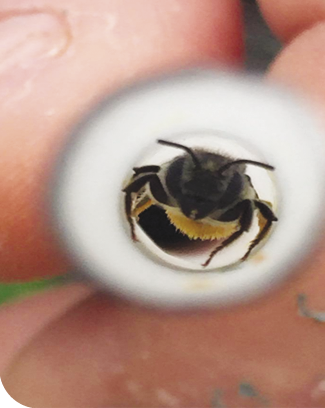
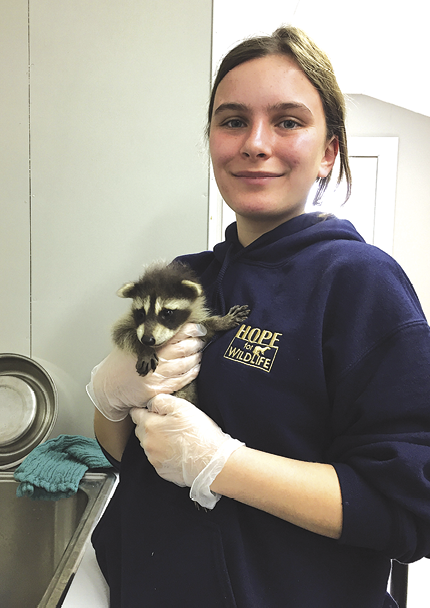
The 2021 Cliff Bennett Nature Bursary application period is now open. Students entering first year post-secondary studies in a university or college program related to the natural environment are encouraged to apply! Please go to <mvfn.ca/cliff-bennett-nature-bursary> for all eligibility criteria and the application form. The application deadline is May 1.
This year the Bursary Fund, a program of the Mississippi Valley Field Naturalists (MVFN), is fortunate to be the recipient of proceeds from the Mississippi Mills Community Birdhouse Auction. See the related story by Glenda Jones on page 8 of this issue, and visit <mvfn.ca> to learn about many other activities.
Here, the Bursary Selection Committee is pleased to provide an interview with 2018 Bursary recipient Sophie Anderson who was asked about her current program and future plans. Sophie responded to this request enthusiastically, sharing that she would love to participate to help promote the bursary. “It made a big difference for me, particularly in my first year of university!”
Please tell us about where you are in your program. Do you have a special field you’re working toward as a project or research paper?
Sophie Anderson: I am presently completing my third year of an Honours degree in Biology at the University of Ottawa. Last summer I conducted fieldwork around Mississippi Mills studying solitary bees. We wanted to determine whether pollen from certain genera of plants possess antimicrobial properties that, when collected by bees, deter or decrease the rate of fungal infections. I will begin my honors project this summer, studying the diet of solitary wasps in Colorado (Covid permitting!).
What special skills have you picked up in your studies so far? Any big “aha” moments?
One thing I appreciate about my program is the option to participate in the co-op program and gain valuable work experience in different sectors of my field. Over the years I’ve had jobs in wildlife rehabilitation (with Hope for Wildlife in Nova Scotia), pollinator research, and government training with Environment and Climate Change Canada. Each of these positions has taught me new skills and allowed me to reflect on my future career. Without these opportunities all my knowledge would be simply theoretical.
How easy has it been to find time to get out to do your own exploring in the field? What were some of your most amazing finds over the years?
Even before I joined the MVFN, I was always an avid birder because I loved the mobility, beauty and personality of different bird species. Since starting my university career I still enjoy going out in the field, but I look at birds in a more scientific way. When I look at them now, I often reflect on how their lungs work, or think about their evolutionary history. I find that knowing more about a bird’s biology makes them even more fascinating. My most memorable birding experience was when I saw a roadrunner in Arizona, but I often help my parents identify birds they see here over the phone from Ottawa!
Have you found mentors who are helping you find opportunities and resources? Have you had any “calls home” to Mississippi Valley Field Naturalist contacts when you had a question or were seeking advice?
Ever since I joined MVFN I’ve found it to be an amazing way to find and connect with other people who want to understand nature and how human beings can live in harmony with it. From when I first started attending the meetings, to being sponsored to participate in the 2017 Ontario Youth Summit for Biodiversity, and finally receiving the Cliff Bennett Nature Bursary, I’ve made many friends and mentors at MVFN. Over the years I’ve stayed in contact with my friend, past president Brenda Boyd. And just last week (after many conversations over the years), Rob Longair (a renowned expert on wasps) and I brainstormed ideas for my summer 2021 honours project. The MVFN has always been there for me.
How far ahead have you thought about your career path? Where would you like to start out?
Choosing a career path is a difficult decision that requires a lot of thought. At the moment I am trying to decide between more applied biology, such as veterinary medicine, or the more research-oriented route where I’d be interested in studying the interactions between plants and pollinators. When you’re working one-on-one with an injured animal to help it, this is an immediate rewarding experience (especially if it lives!). On the other hand, we need to understand how humans impact the environment and natural processes, such as pollinator-plant interactions, to be able to mitigate negative effects that humans have on the environment. This is also very worthwhile, but the results are not as immediate. You have to be more patient.
Do you have any final comments or recommendations for students interested in applying to the Cliff Bennett Nature Bursary?
To anyone interested in applying for the bursary or pursuing a career in biology, attend the monthly MVFN Nature Talks. They are really inspiring and the things you learn will complement your studies. It is also a good way to start to imagine your future because the speakers come from a variety of backgrounds and jobs such as government workers, university professors or non-profit organizations, so you get a good idea of where you might be able to contribute to the field.
In terms of university, make sure you have a real passion for studying biology; this will get you past the first few years of quite difficult courses that are not necessarily directly related to your interests. If you love what you are doing, it will give you the motivation to keep going.
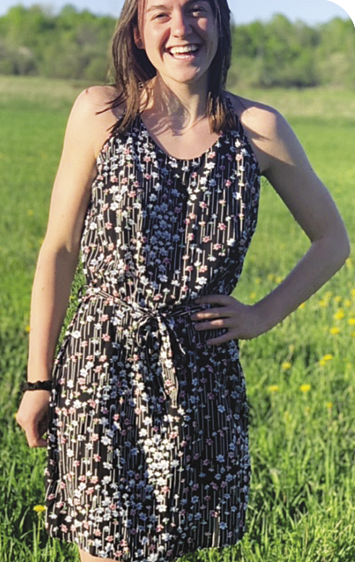
A fashion show? During Covid? We can do it! Zion-Memorial United Church will be presenting a virtual fashion show on Thursday, April 22, at 7pm. There are five shops in Carleton Place who are participating: The Wool Shop, Sinders Bridal House, Graham’s Shoes, The Dress Shop and Aquisti Life. They will be joined by Almonte’s Kentfield Kids. Tickets are $10, and proceeds will go to the Church.
This is a great way to see what’s new at local shops for the spring and summer season in a safe way. Each shop will be taping a short segment of some new spring arrivals. Zion-Memorial will edit the videos together to make the fashion show. Feel free to get dressed up to watch, and enjoy a cup of tea or a glass of wine. Make it fun! Tickets to the show are available through Eventbrite — just look for Zion-Memorial virtual fashion show. You can also phone the Zion-Memorial office at 257–2133 for information or e-tickets.
For a number of years, Zion-Memorial has had a spring fashion in our upper hall. Nancy Code of Nancy’s Impressions worked hard to put on these events. Each table was beautifully decorated, a special dessert was served, and there was entertainment during the intermission. A good time was had by all. We thank Nancy for all those years of fashions shows and all her hard work. Although Nancy has retired from retail, she now does alterations from her home. As with everything else she does, her alterations are wonderful.
No one knows what the world will be like on April 22, but we can see what outfits we will be wearing when we get outside this spring!